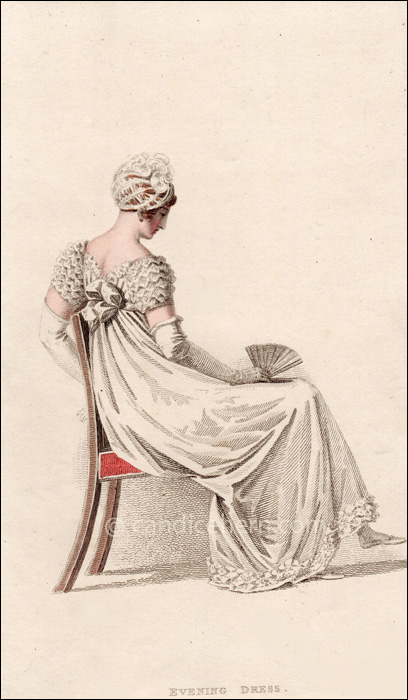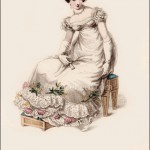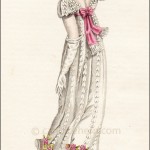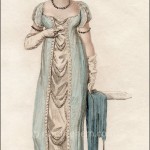Ackermann’s Repository of Arts, August 1815.
Though various colors are seen in evening dress, white is still the most prevalent. But a white dress need not be plain. This one is an example of lush fabric, tulle and satin, along with elegant trimming that makes even a white dress supremely elegant.
The print is described in the magazine as follows:
“A white satin petticoat, richly ornamented at the feet with a broad border of tull and satin; a frock-body, tied behind, composed of tull and satin, with a quilling of tull terminating at each point of the shoulder strap; a short sleeve, richly ornamented with frilled tulle, corresponding to the bottom of the dress; short sash of white satin, tied in full bows behind. Cap composed of white satin and gathered tull, decorated in the front with a full wreath formed of tull edged with satin. Stockings plain silk. Slippers white kid or ribbed sarsnet. Gloves French kid, drawn over the elbow.”
The following general commentary follows the print description:
“The waists of both morning and full dress continue extremely short, and the backs in full dress are generally brought very low, and frequently to the bottom of the waist. The fronts of both high and low bodices continue without alteration; and are made plain, to fit the shape. In morning and promenade dress the sleeve is universally long, and this month worn of the same material as the dress. The short full sleeve is equally prevalent in evening costume. The length of the walking petticoat continues to meet the top of the sandal, which appears in more estimation than the boot. The most prevailing colours for the present month are Pomona green, primrose, apple-blossom, and the celestial blue.”








